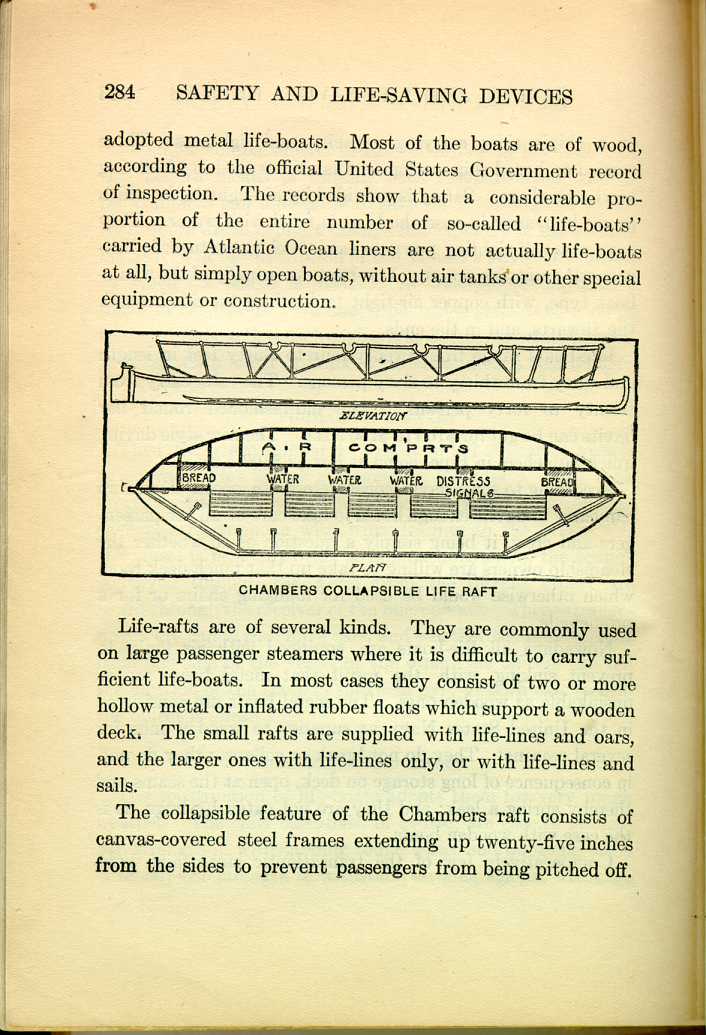IFEBOATS AND RAFTS
The construction of life-boats adapts them for very rough weather. The chief essentials, of course, are ease in launching, strength in withstanding rough water and bumping when beached; also strength to withstand striking against wreckage
Life-boats range from twenty-four to thirty feet in length and carry from thirty to sixty persons. The rafts carry from twenty to forty persons. The old-fashioned round bar davits can be got for $100 to $150 a set. The new style davits, quick launchers in type, come as low as $400 a set.
According to some naval constructors, an ocean steamship can carry in davits enough boats to take care of all the passengers and crew, it being simply a question as to whether the steamship owners are willing to take up that much deck room which otherwise would be used for lounging chairs or for a promenade.
Nowadays all life-boats are equipped with air tanks to prevent sinking, with the result that metal boats are as unsinkable as wooden ones. The metal boats are considered in the United States Navy as superior to wooden ones, for several reasons: They do not break or collapse; they do not, in consequence of long storage on deck, open at the seams and thereby spring a leak; and they are not eaten by bugs, as is the case with wooden boats.
Comparatively few of the transatlantic steamships have
Life-rafts are of several kinds. They are commonly used on large passenger steamers where it is difficult to carry sufficient life-boats. In most cases they consist of two or more hollow metal or inflated rubber floats which support a wooden deck. The small rafts are supplied with life-lines and oars, and the larger ones with life-lines only, or with life-lines and sails.
The collapsible feature of the Chambers raft consists of canvas-covered steel frames extending up twenty-five inches from the sides to prevent passengers from being pitched off.
The collapsible rafts are favored by the ship-owners because such boats take up less room; they do not have to be carried in the davits, and they can be stowed to any number required. Some of the German lines stack their collapsible rafts one above another on deck.
